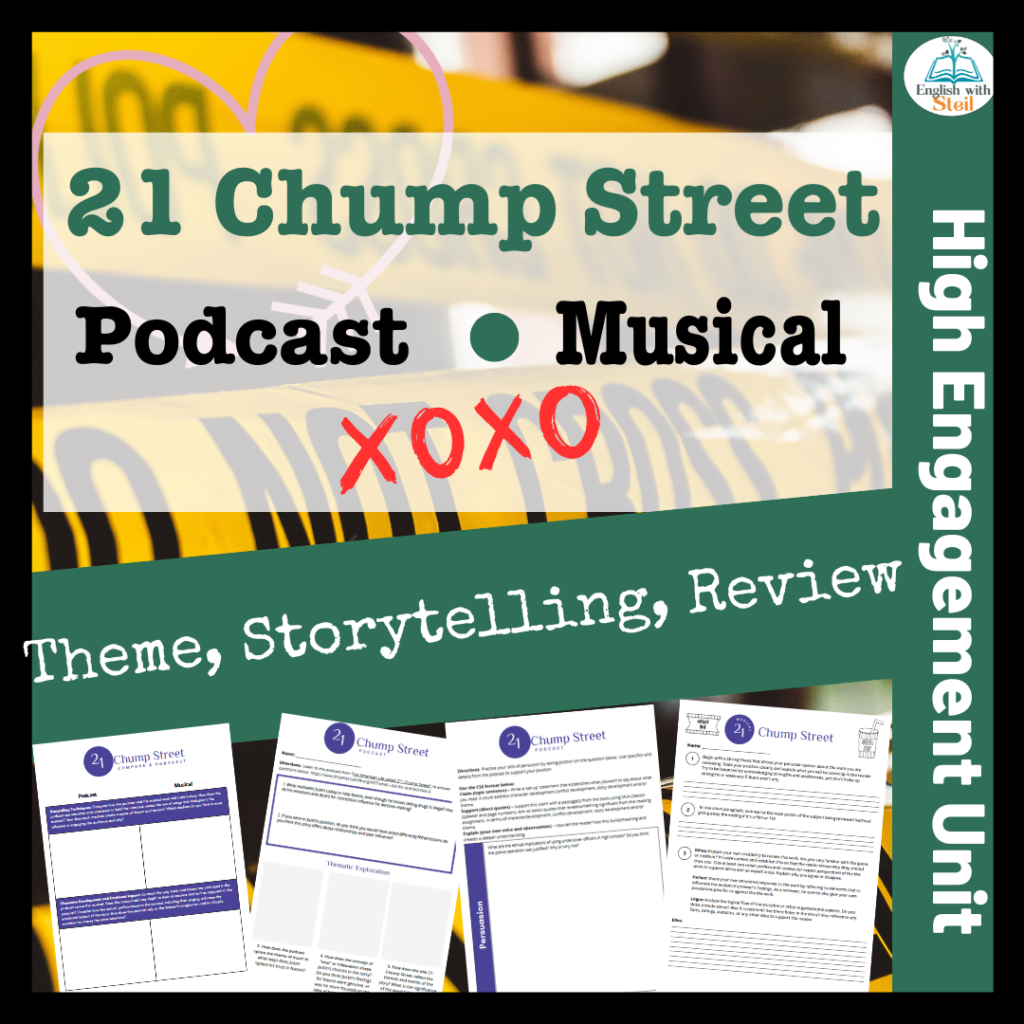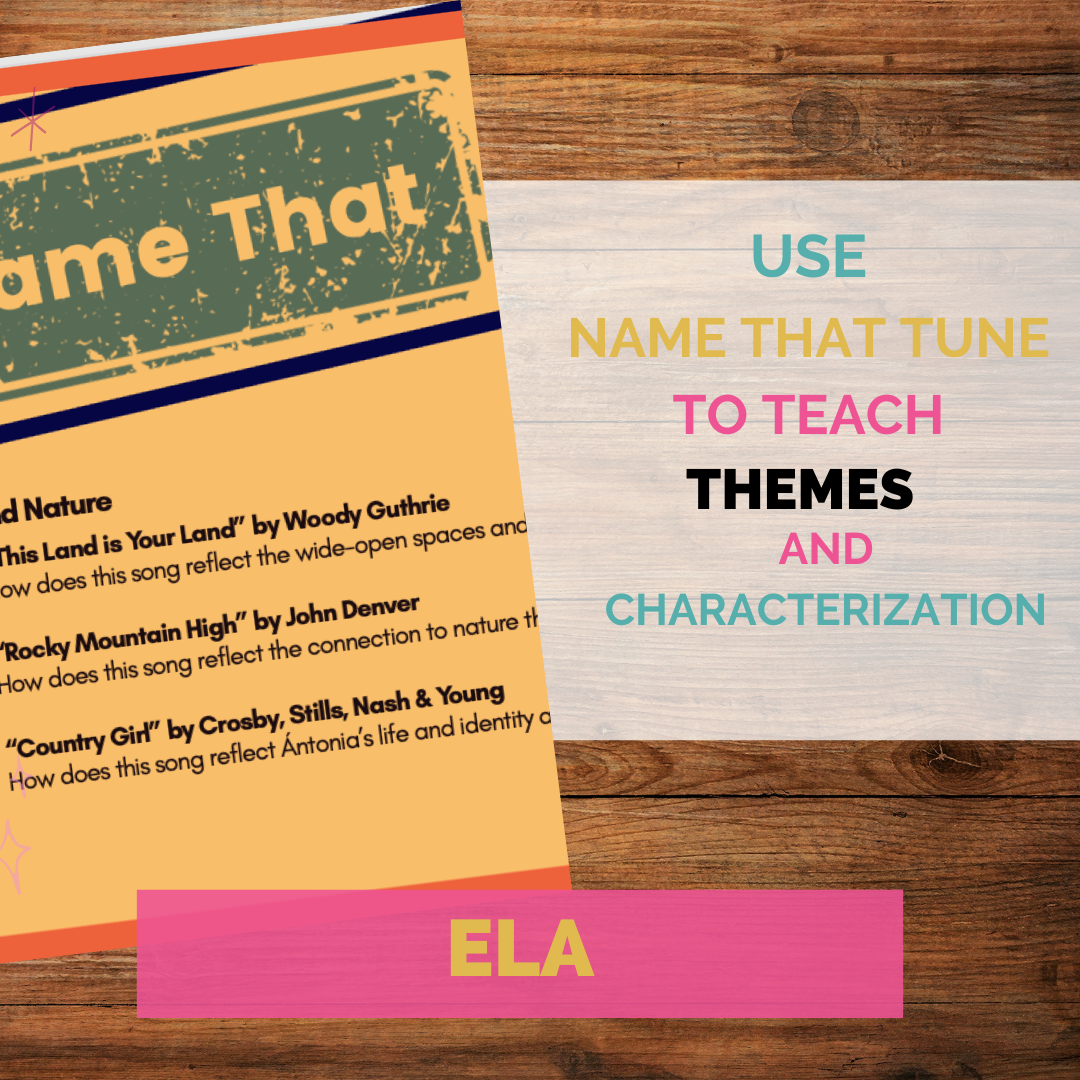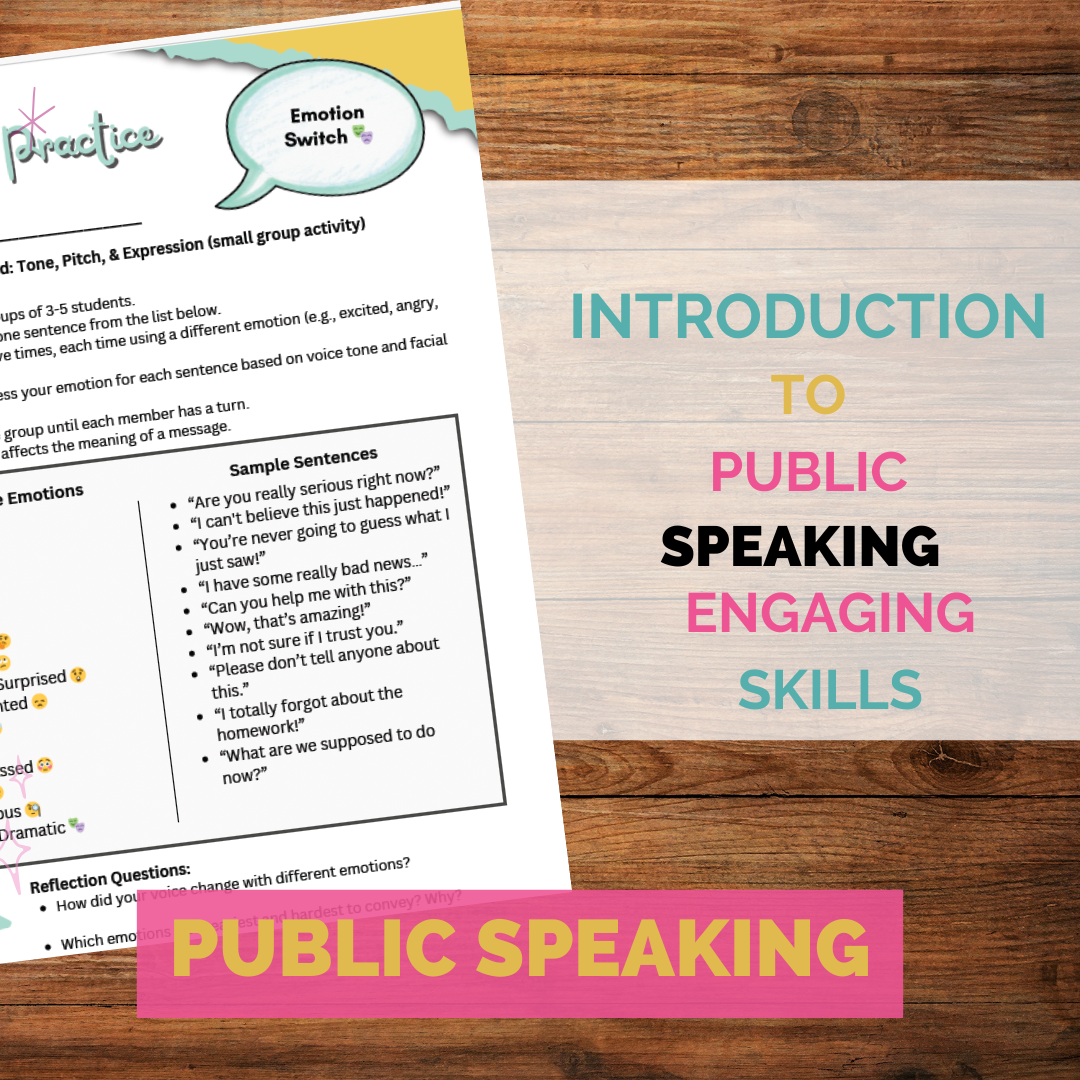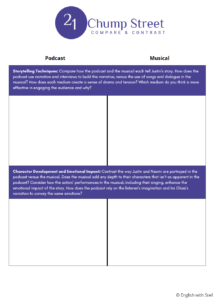
When it comes to teaching storytelling, empathy, and decision-making in today’s classrooms, teachers are always searching for content that resonates with students on multiple levels. The 21 Chump Street musical, based on a true story from This American Life, is one of those rare gems that merges narrative depth, social issues, and musical theater in a way that feels both relevant and entertaining. If you’re considering bringing this 15-minute musical written by Lin Manual Miranda into your curriculum, here’s why it’s worth your time and how it can benefit your students.
Why Teach 21 Chump Street?
1. Real-Life Consequences and Moral Decision-Making At the core of 21 Chump Street is the story of Justin Laboy, a high school senior who makes a life-altering decision to impress a girl. The narrative explores peer pressure, trust, and the impact of a single poor decision. In a world where students are constantly navigating social influences and romantic relationships, Justin’s story offers a concrete example of how short-term choices can have lasting effects. Teaching this musical allows students to reflect on their own decision-making processes and the consequences that may follow, encouraging them to critically assess the choices they make in their own lives.
2. Engaging with Relevant Social Issues 21 Chump Street touches on themes that are directly relevant to students today: drug use, undercover police operations in schools, and the fine line between right and wrong. These are topics that can spark important conversations about personal responsibility, the role of law enforcement in schools, and the impact of peer pressure. By engaging with these discussions through the lens of a musical, students may find it easier to explore complex issues in a way that feels accessible and emotionally resonant.
3. Cross-Curricular Learning: Theater, Music, and Ethics The beauty of 21 Chump Street is its interdisciplinary potential. Not only does it explore social issues, but it also introduces students to the world of musical theater. This allows teachers to combine lessons in ethics and decision-making with lessons in the performing arts. Students can analyze the storytelling techniques, the use of music to convey emotion, and the role of performance in bringing a narrative to life. This cross-curricular approach engages students’ different learning styles and helps them see the connections between various subjects.
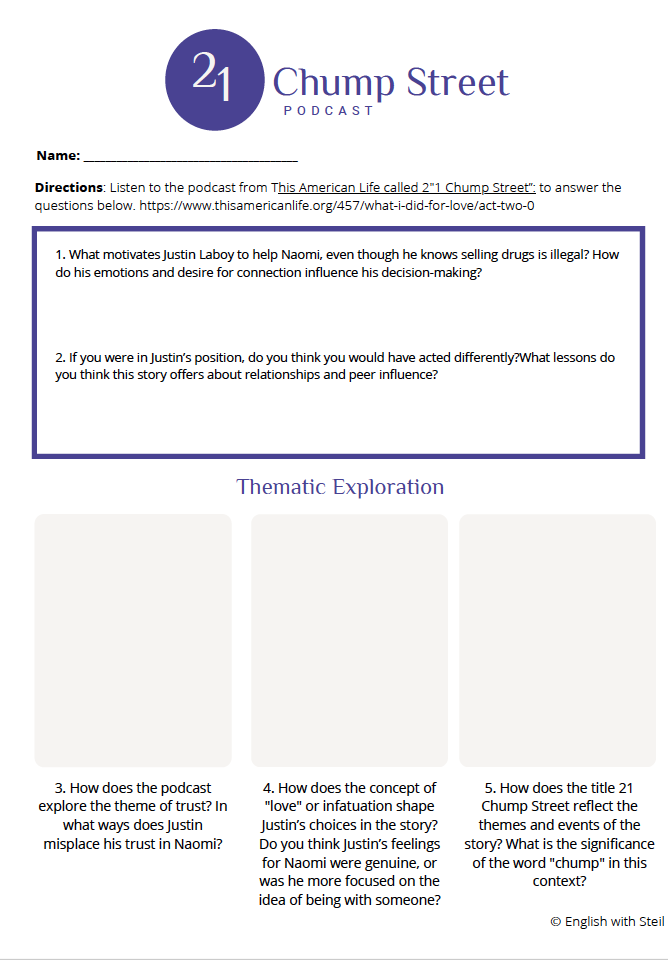
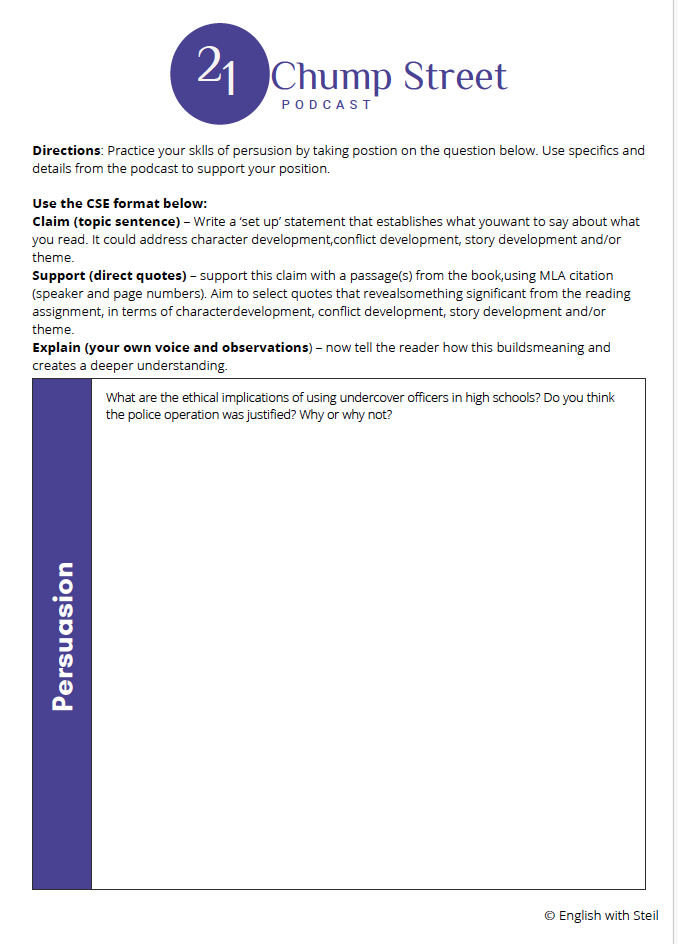
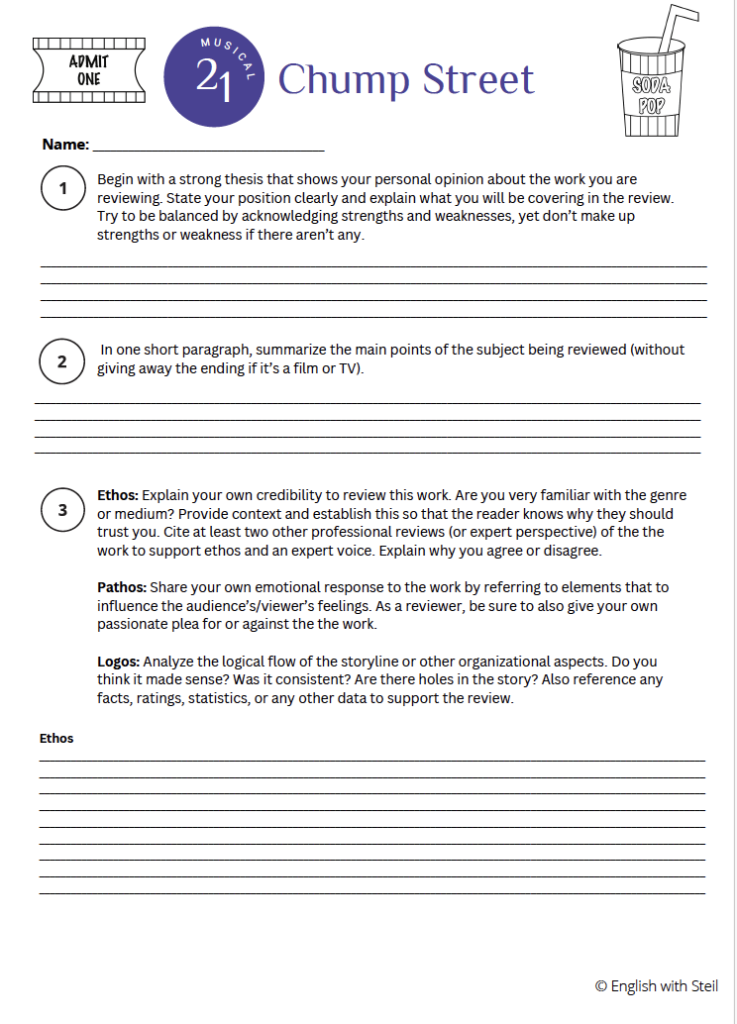
The Value of Teaching Podcasts and Listening Skills
Podcasts are becoming an increasingly popular teaching tool, and there’s good reason for that. In a world where visuals often dominate, teaching students how to be good listeners is more important than ever. The original This American Lifeepisode from which 21 Chump Street is adapted is a perfect introduction to the world of podcast storytelling.
1. Developing Critical Listening Skills Listening to a podcast requires a different set of skills than reading a text or watching a video. Students must focus on tone, inflection, pacing, and how audio cues help shape a story. By listening to the podcast version of 21 Chump Street, students will learn to pick up on the subtleties of storytelling through sound—skills that are essential in both academic and real-world settings.
2. Enhancing Empathy Through Audio There’s something uniquely personal about listening to someone tell a story through a podcast. The absence of visuals allows listeners to place themselves in the narrative and imagine the scenes in their own way. This enhances emotional engagement and empathy, which are crucial for developing social and emotional skills in students. Podcasts, like This American Life, provide opportunities for students to hear diverse perspectives and stories, broadening their understanding of the world around them.
3. Building Listening Comprehension Incorporating podcasts into your classroom also helps students improve their listening comprehension. With students spending so much time consuming visual media, podcasts challenge them to focus solely on auditory information. This skill is valuable not only for language arts but also for everyday life, where active listening is a key component of effective communication.
Teaching Arts Reviews: Critiquing Performance and Storytelling
One of the most powerful ways to engage students with 21 Chump Street is through arts reviews. Encouraging students to critique the musical or podcast version not only enhances their analytical skills but also allows them to express their opinions creatively.
1. Encouraging Critical Thinking and Analysis Teaching students how to review a musical or podcast involves more than just asking whether they liked it. It requires them to consider elements like narrative structure, character development, musical composition, and the emotional impact of the performance. Through this process, students learn to articulate their thoughts and provide constructive feedback. This practice of analysis sharpens their ability to think critically about the media they consume.
2. Connecting Personal Experience to Art Arts reviews also provide students with the chance to reflect on how the themes and messages of the performance relate to their own lives. In the case of 21 Chump Street, students might discuss how peer pressure has influenced them, or how they felt about Justin’s decision in the musical. This encourages personal reflection and deeper engagement with the material, helping students see the real-world relevance of the art they’re critiquing.
3. Fostering Creative Expression Writing reviews also gives students the chance to express their creativity. Whether it’s through written reviews, video critiques, or podcast discussions of their own, students can experiment with different formats and develop their voice as reviewers. This not only enhances their writing and speaking skills but also boosts their confidence in sharing their perspectives.
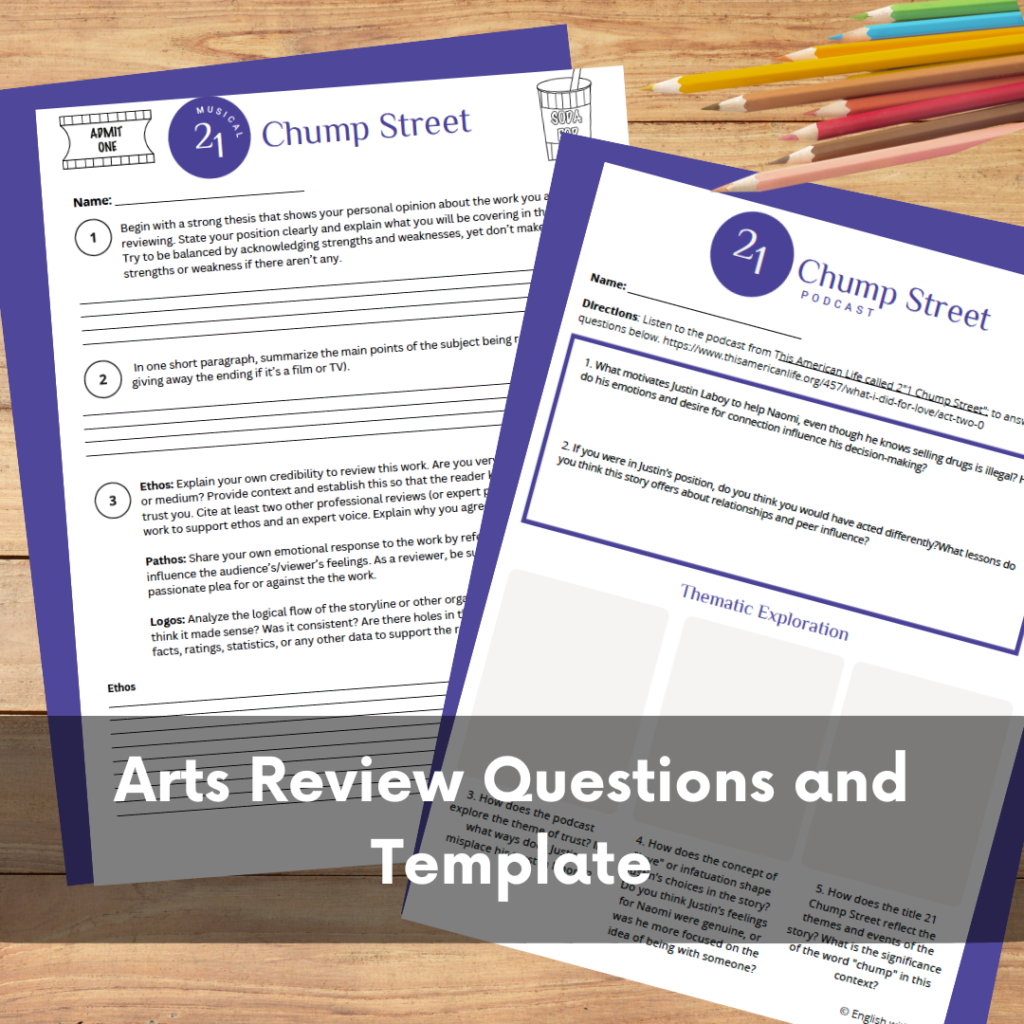
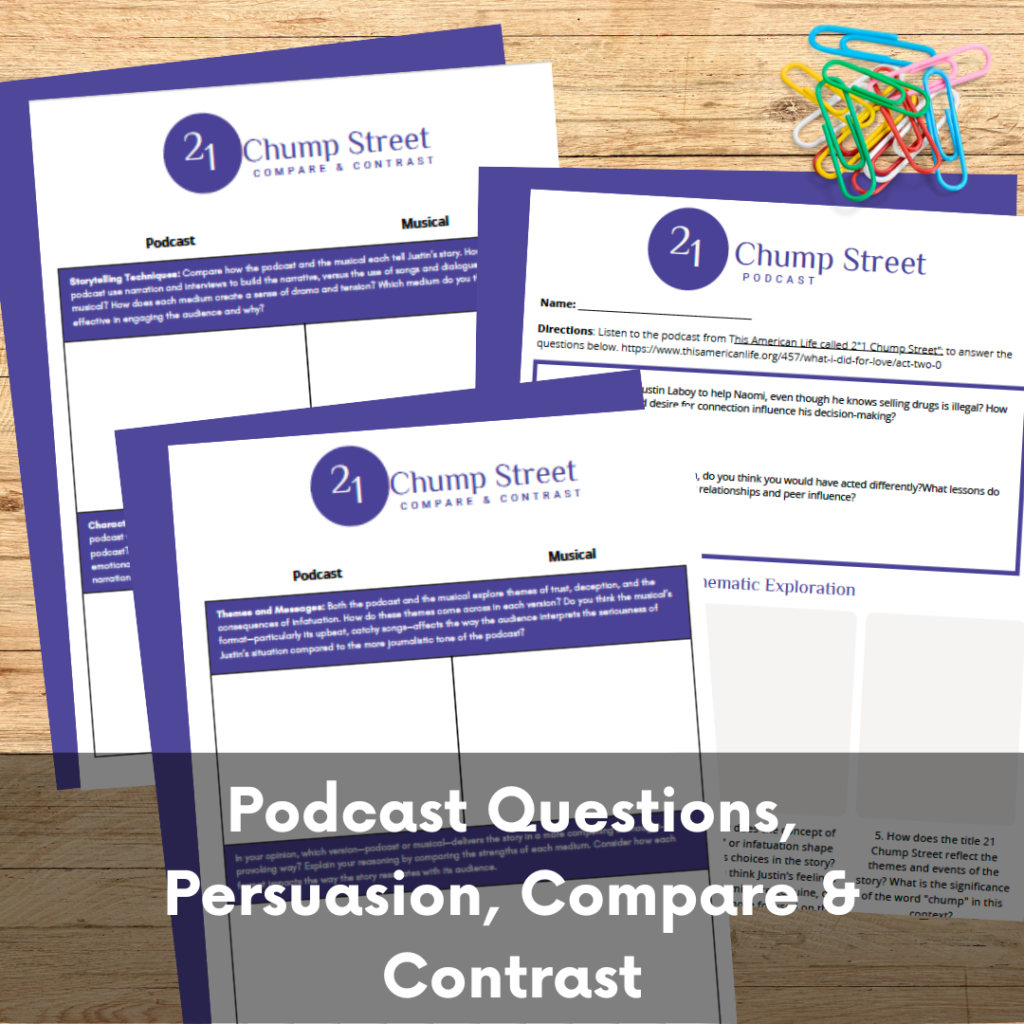
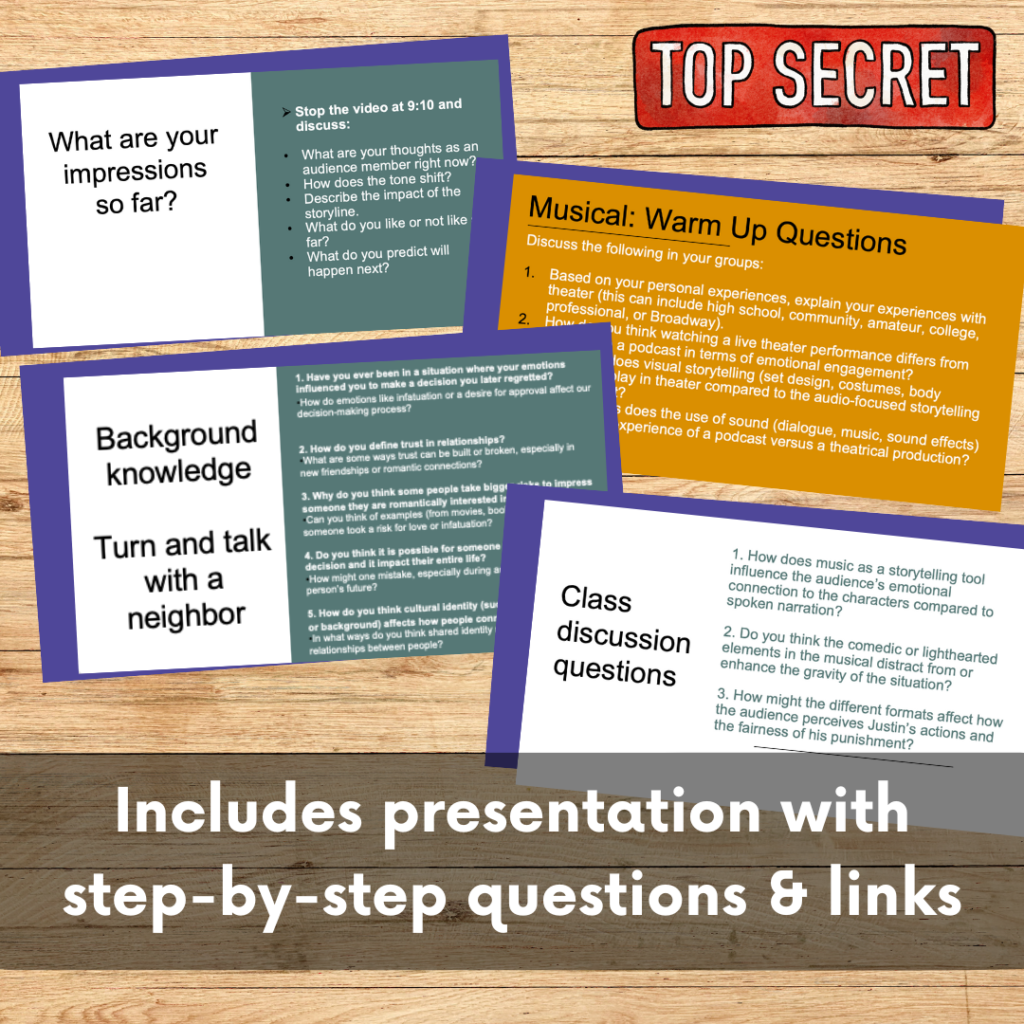
Creative Ideas for Teaching 21 Chump Street
Incorporating 21 Chump Street into your curriculum offers endless opportunities for creativity in the classroom. By combining lessons in storytelling, music, decision-making, and ethics, you can develop a unit that engages students on multiple levels. Here are some innovative and interactive ways to teach this musical and enhance your students’ learning experience.
1. Role-Playing and Reenactments
One of the best ways for students to engage with 21 Chump Street is through role-playing. Have students reenact key scenes from the musical, encouraging them to step into the shoes of characters like Justin, Naomi, and even the undercover police. This activity will help students better understand the motivations, emotions, and pressures each character faces.
- Variation: After acting out the scenes, you could have students rewrite a portion of the script to reflect how the situation might change if different decisions were made by the characters. This allows students to explore alternate outcomes and reflect on the weight of personal choices.
2. Debates on Ethical Dilemmas
Since 21 Chump Street is based on real-life events involving law enforcement in schools and undercover operations, it’s a great opportunity to hold a classroom debate. Divide students into two groups, with one side defending the use of undercover officers in schools and the other arguing against it. This will allow students to explore both sides of a complex ethical issue, using evidence from the musical and their own research.
- Extension: After the debate, have students write reflective essays about where they stand on the issue and how the debate helped them understand different perspectives.
3. Create Your Own Podcast
After listening to the This American Life episode that inspired 21 Chump Street, encourage students to create their own short podcasts based on a topic that interests them or relates to their lives. This will not only reinforce their listening and comprehension skills but also help them develop storytelling, technical, and production abilities. Students can work individually or in groups to record their podcasts, focusing on themes like peer pressure, decision-making, or personal stories of overcoming challenges.
- Tip: Encourage students to include elements like music, sound effects, and interviews, similar to how This American Life integrates these tools into its episodes.
4. Songwriting Activity
Since 21 Chump Street is a musical, give students the opportunity to try their hand at writing a song. Ask students to select a pivotal moment in the story and write lyrics that express the emotions or motivations of the characters in that moment. This activity allows students to tap into their creative side while deepening their understanding of the narrative.
- Extension: For musically inclined students, allow them to compose a melody to go along with their lyrics. You could even host a classroom performance where students share their original compositions.
5. Character Journals
Have students select a character from 21 Chump Street—such as Justin, Naomi, or a classmate—and write journal entries from that character’s perspective. These entries could cover events that happen in the musical or imagined backstories that deepen the character’s motivations and emotions. This activity helps students develop empathy and better understand the internal struggles and thought processes of each character.
- Variation: Students could share their journal entries in a “roundtable” discussion, allowing them to see how different perspectives on the same event can lead to varying interpretations of the story.
6. Collaborative Storyboarding
Before students watch or listen to 21 Chump Street, introduce them to storyboarding techniques and have them work in small groups to create a visual representation of the musical’s key scenes. This can help students better grasp the structure of the story and how various elements, such as character development and conflict, contribute to its progression.
- Extension: After completing their storyboards, groups could present them to the class and explain their reasoning behind the visual choices they made for each scene.
7. Analyzing News Stories Related to the Themes
Since 21 Chump Street deals with undercover operations, peer pressure, and criminal justice issues, ask students to research and analyze real-world news stories related to these themes. They can find articles about similar cases of undercover police work in schools or reports on the impact of teenage decision-making and the consequences that follow. This will help students connect the story to broader societal issues.
- Project Idea: Have students present their findings in a multimedia format, such as a digital presentation, short video, or a mock news report.
8. Arts Review Assignment
As a culmination activity, have students write their own arts review of 21 Chump Street after watching or listening to it. Ask them to evaluate the effectiveness of the storytelling, the performances, the use of music, and how well the production communicates its themes. This not only encourages critical thinking but also develops students’ writing skills, helping them articulate their opinions in a structured and thoughtful manner.
- Variation: Students can also create video reviews or participate in a roundtable podcast-style discussion where they share their thoughts on the musical as a group.
Final Thoughts
21 Chump Street offers a wealth of opportunities for discussion, analysis, and creative expression. Its short, engaging format makes it perfect for classroom use, and its exploration of real-life themes provides meaningful lessons for students. Whether you’re teaching listening skills through podcasts, diving into musical theater, or encouraging arts reviews, 21 Chump Street is a versatile tool that can enrich your curriculum and connect with your students in a way that resonates.
By incorporating this musical and the related podcast into your teaching, you’ll provide students with the chance to develop empathy, think critically, and reflect on their own experiences—all while engaging with a story that feels as relevant as it is entertaining.
